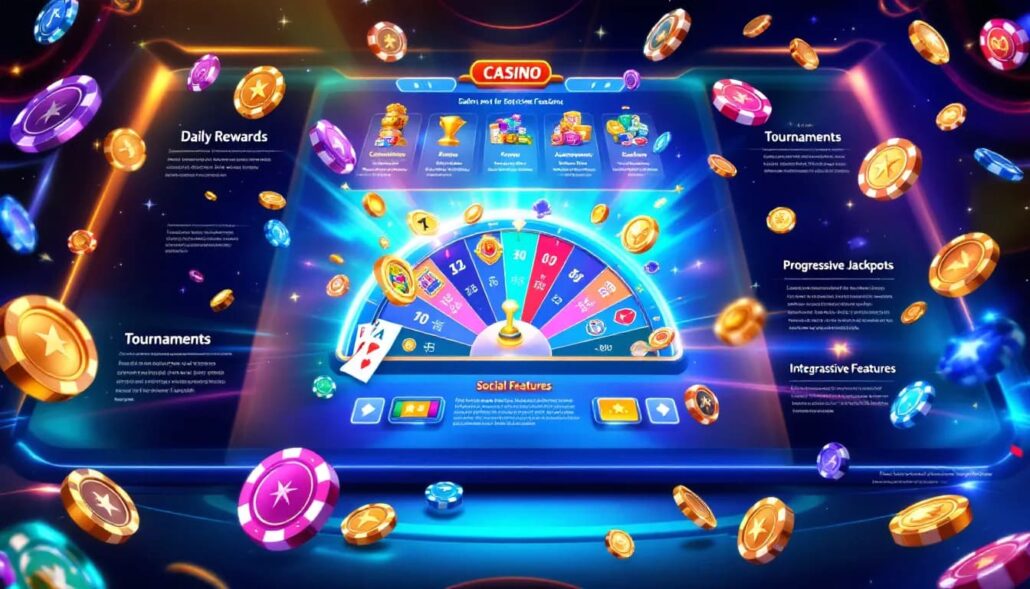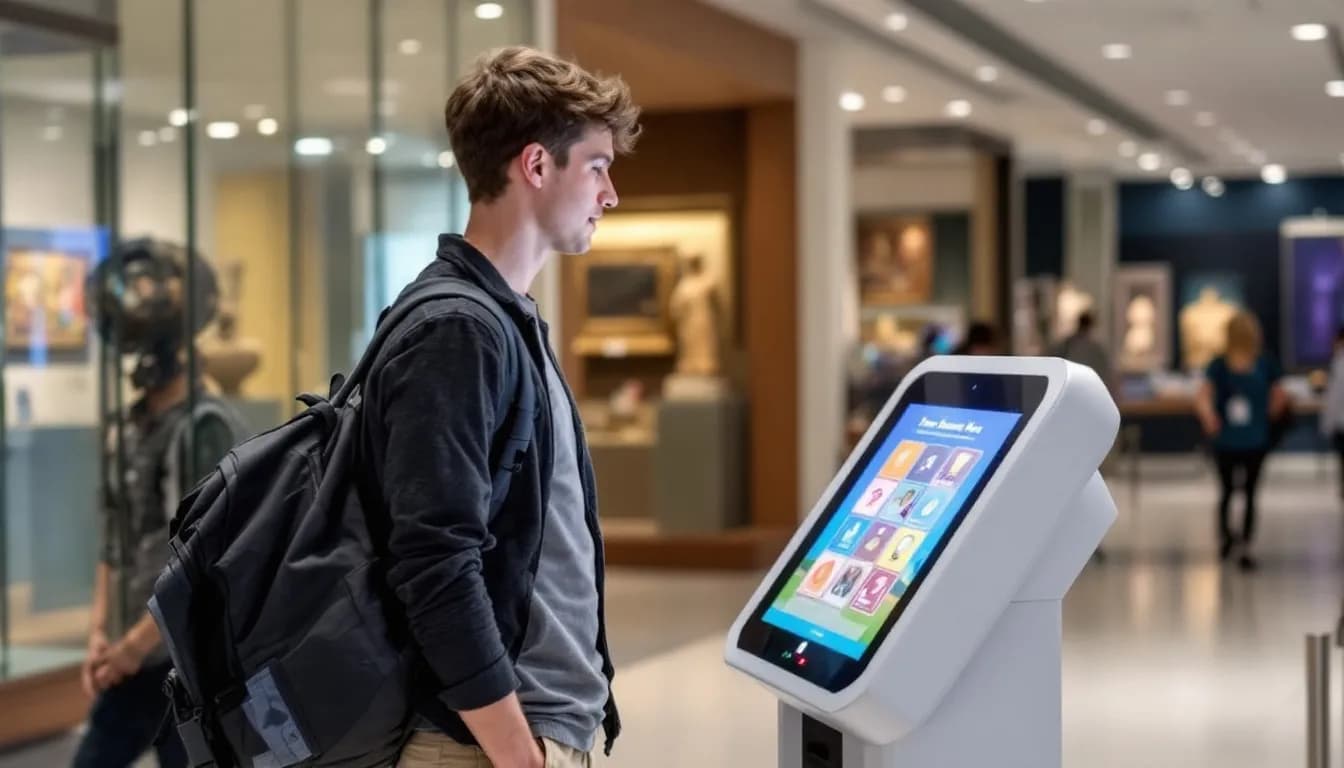Museums worldwide are increasingly adopting gamification to reinvent the visitor experience. Digital technology, such as AR and VR, is transforming museum spaces into immersive experiences that engage visitors on a deeper level. Instead of being passive observers, guests become active participants, engaging with exhibits through challenges, points, and interactive tools. This shift reflects the modern demand for hands-on learning and digital experiences.
Surprisingly, cultural institutions can draw inspiration from social casinos. While their goals differ, both seek to capture attention, foster loyalty, and encourage repeat participation. Platforms like sweepstakes casino Sixty6 demonstrate how engagement can be sustained through carefully designed game mechanics, offering valuable insights that museums can adapt in more educational and ethical ways.
As museums compete with digital entertainment, gamification provides a way to merge cultural enrichment with interactive fun, ensuring visitors leave both entertained and inspired. Some museums are now creating virtual worlds that allow visitors to explore detailed digital recreations of historical sites, further enhancing the interactive exhibition experience.
Immersive experiences and virtual worlds are becoming central to the future of visitor engagement in museums, offering new ways to connect with cultural heritage through advanced digital technology.
What Is Gamification and Game Design Elements in Museums?
Gamification refers to the integration of game mechanics—such as achievements, points, quests, or leaderboards—into non-game contexts. These techniques are increasingly applied in non-game environments, such as museums, to enhance engagement, motivation, and learning. In museums, this approach transforms exhibitions into dynamic learning environments where visitors gain rewards for exploring and interacting.
Examples of gamification techniques already in use include:
- Points and badges for completing exhibit tasks.
- Quests or scavenger hunts guiding visitors through different halls.
- Leaderboards to encourage friendly competition.
- Unlockable AR/VR content for completing challenges.
- Progress tracking that shows how much of an exhibition has been explored.
- Incorporation of specific game elements such as stories, role-playing, and challenges.
By integrating gamification elements and applying core game principles, museums can transform traditional visits into more immersive and engaging experiences that foster deeper interaction and learning.
By tapping into visitors’ natural curiosity and motivation to achieve, and by applying gamification principles, museums make learning more memorable and enjoyable.
How Social Casinos Keep Players Engaged

Social casinos are free-to-play platforms that simulate casino games without requiring real-money betting. Their appeal lies not in gambling but in how they keep players engaged through smart mechanics.
Key tactics include:
- Reward systems that grant bonuses as players progress.
- Daily log-in incentives to encourage return visits.
- Social interaction features like leaderboards and team play.
- Personalization that adapts to each user’s preferences. Museums can use digital tools such as AI, augmented reality, or virtual reality to create personalized experiences for visitors, tailoring content and interactions to individual interests.
These methods create feedback loops that motivate users to continue engaging day after day. Museums can borrow these mechanics to inspire repeat visits, engage visitors, and contribute to increasing audience engagement.
Social Casino Tactics vs. Museum Applications
| Social Casino Tactic | Museum Application Example |
|---|---|
| Daily bonuses | Daily trivia or rotating exhibit challenges |
| Level progression | Unlocking deeper exhibit content as you explore |
| Leaderboards | Visitor rankings for scavenger hunts |
| Social play | Group quests across different exhibit halls |
| Personalized offers | Tailored recommendations via museum apps |
| Interactive elements | Incorporating interactive elements such as digital touchscreens, AR games, or smart objects to create immersive interactive experiences in exhibits |
These tactics provide visitors with more engaging and interactive experiences, encouraging longer and more meaningful visits.
Lessons Museums Can Learn from Social Casinos
The success of social casinos highlights several lessons museums can adapt without compromising their educational mission. These lessons can be considered key strategies for enhancing visitor experiences by making museum visits more interactive, memorable, and engaging.
- Reward systems and motivation loops encourage ongoing interaction.
- Repeat visits can be inspired by streaks, badges, or exclusive unlocks.
- Building community through group quests or friendly competition enhances the visitor experience.
- Integrating gamification elements, such as points, badges, and leaderboards, can enhance engagement throughout the museum visit by motivating participation and fostering immersive learning.
- Personalization ensures each visitor feels the journey is tailored to them.
Reward Mechanics That Work
Engaging visitors requires thoughtful rewards. Museums can experiment with:
- Daily challenges encouraging short return visits. Gamified learning activities can also be integrated into museum exhibits, using storytelling, role-play, and goal-setting to enhance engagement and educational outcomes.
- Digital collectibles like AR postcards tied to exhibits.
- Scavenger hunts using mobile apps with hidden clues.
A notable example is a museum loyalty app that rewards visitors with points for exploring exhibits. Gamified elements such as points, badges, and challenges can motivate visitors to explore more museum exhibits and participate actively. These can later be exchanged for gift shop discounts or exclusive behind-the-scenes content.
Social Interaction and Competition
Interactive exhibits become more exciting when they involve teamwork or competition. Leaderboards, trivia games, and collaborative scavenger hunts promote engagement while keeping learning at the core. Escape games and interactive storytelling, designed around the museum’s theme, can further foster teamwork and engagement by creating immersive, participative experiences. Museums must strike a balance, ensuring that competition enhances the experience without overshadowing educational goals.
Challenges and Ethical Considerations

While gamification offers benefits, it also poses challenges. Museums must design experiences that are fun yet responsible.
- Balancing education with entertainment is crucial; games should complement rather than distract from exhibits.
- Avoiding addictive loops ensures visitors engage without feeling manipulated.
- Accessibility and inclusivity are essential so that all age groups and abilities can participate.
- Designing gamified experiences that cater to different learning styles helps ensure that activities are engaging and effective for a diverse audience.
An example of ethical gamification is the Boston Children’s Museum, which uses digital scavenger hunts to guide exploration. The focus remains on age-appropriate learning rather than endless gameplay. The educational value of gamification depends on thoughtful implementation and can only enhance learning outcomes to a certain extent.
Case Studies of Gamification in Museums
Several museums have already implemented gamification successfully, often combining interactive activities with multimedia content to enhance visitor engagement:
- American Museum of Natural History: Scavenger hunt apps encourage families to explore exhibits interactively.
- Smithsonian Institution: Immersive AR and VR projects allow visitors to step into historical moments.
- Local museums: Smaller institutions adopt badge systems, rewarding students for completing thematic quests.
- National Museum: The National Museum of Denmark offers online mini-games and interactive activities to engage visitors both onsite and remotely.
- Few museums: A few museums have integrated escape games into their exhibits, creating participative and adventurous experiences for visitors.
- Many museums: Many museums are adopting gamification strategies to enhance engagement and create more immersive experiences.
- Most museums: Most museums are beginning to use gamification, but there is still untapped potential to develop longer-lasting, impactful experiences that foster visitor loyalty.
- Ancient Egypt: The British Museum offers an immersive virtual experience dedicated to ancient Egypt, enabling visitors to explore recreated temples and daily life through interactive storytelling and digital games.
These are practical examples of gamification that illustrate how museums utilize technology, multimedia content, and interactive activities to enhance the visitor experience.
How Museums Can Implement Gamification for Visitor Engagement Successfully
Integrating gamification into various aspects of museum content is essential for enhancing visitor engagement and learning. By thoughtfully applying game elements to museum content, institutions can create more interactive and immersive experiences that connect directly to exhibits and educational objectives.
A thoughtful rollout plan helps ensure gamification achieves its goals.
- Define visitor goals: Decide whether the focus is education, engagement, or repeat visits.
- Select appropriate mechanics: Choose rewards, quests, or AR features aligned with learning outcomes.
- Consider various aspects of the museum experience: Address cultural elements, craftsmanship details, and components of historical models to provide a comprehensive and engaging approach when integrating gamification.
- Pilot test: Start with small-scale trials before full implementation.
- Collect feedback: Continuously improve experiences based on visitor insights.
Do’s and Don’ts
Do:
- Align gamification with educational content.
- Keep tasks achievable and rewarding.
- Ensure inclusivity across age groups and abilities.
- Regularly update interactive elements to keep experiences fresh and engaging.
Don’t:
- Rely on manipulative or addictive tactics.
- Overcomplicate the mechanics.
- Neglect the needs of less tech-savvy visitors.
- Neglect the importance of interactive exhibitions in your overall strategy.
FAQ
What is gamification in museums? It utilizes game-inspired elements—such as points, quests, and challenges—to enhance visitor engagement and learning, thereby providing visitors with a richer educational experience.
How can social casino strategies apply to museums? Social casinos use rewards, streaks, and competition to keep users engaged. Museums can adapt these ideas to encourage exploration and participation in an educational context, helping museum visitors connect more deeply with exhibits.
Are there risks to gamifying museum visits? Yes. Overuse of addictive or distracting mechanics could shift focus away from learning. Careful, ethical design ensures games remain educational. It is also important to consider the experience economy and audience engagement when designing these experiences. Ongoing future research, building on existing research, is needed to understand long-term impacts and best practices.
What tools do museums use for gamification? Mobile apps, AR/VR features, QR codes, scavenger hunts, and digital badge systems are commonly used. Museum staff play a crucial role in facilitating interactive experiences and assisting visitors in solving problems during their visit. These interactive elements support the overall museum experience by making it more engaging and memorable.
Do gamified museum experiences work for all age groups? Yes, but different mechanics suit different ages. Kids enjoy scavenger hunts, teens like team challenges, and adults prefer narrative-driven quests. Strategies such as incorporating technology and innovative exhibits are especially effective for engaging younger visitors. Interactive experiences can also spark more interest among different visitor groups, encouraging them to participate and learn.
Further Reading: For more details on gamification and immersive experiences in museums, see the paper presented at the 2023 International Conference on Digital Heritage. Additional resources and case studies can be found in the further reading section of our website.
Conclusion
Gamification in museums has the power to transform traditional exhibits into interactive adventures, reshaping cultural spaces through innovative digital engagement. By applying lessons from social casinos, museums can boost visitor engagement, foster repeat visits, and create memorable educational experiences. A recent study on gamification in virtual reality museums demonstrates how playful, immersive elements can deepen visitor satisfaction and learning outcomes, offering a solid research foundation for this shift.
The key lies in balance. While casinos focus on entertainment and retention, museums must ensure games serve their educational mission. A well-designed educational experience depends on the thoughtful integration of gamification into museum content, using storytelling and role-playing to make exhibits more engaging and relevant. Responsible gamification can inspire curiosity, encourage learning, and build stronger community connections.
For museum professionals, the message is clear: explore gamification thoughtfully to attract new generations, strengthen visitor loyalty, and keep cultural learning vibrant in a digital-first world.


